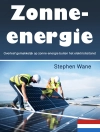Nanospectroscopy addresses the spectroscopy of very small objects down to single molecules or atoms, or high-resolution spectroscopy performed on regions much smaller than the wavelength of light, revealing their local optical, electronic and chemical properties. This work highlights modern examples where optical nanospectroscopy is exploited in photonics, optical sensing, medicine, or state-of-the-art applications in material, chemical and biological sciences. Examples include the use of nanospectroscopy in such varied fields as quantum emitters, dyes and two-dimensional materials, on solar cells, radiation imaging detectors, biosensors and sensors for explosives, in biomolecular and cancer detection, food science, and cultural heritage studies.
Also by the editors: Textbook ‘Optical Nanospectroscopy’:
_’Fundamentals & Methods’ (Vol. 1) and
_’Instrumentation, Simulation & Materials’ (Vol. 2).
关于作者
Alfred J. Meixner is a professor of physical chemistry and the director of the Institute of Physical and Theoretical Chemistry at the Eberhard Karls University in Tübingen. He studied chemistry at the Swiss Federal Institute of Technology (ETH), where he received his Ph D in 1988 and earned his habilitation in Physics from the University of Basel in 1996. His research interests are in optical single molecule spectroscopy, confocal and near-field optical laser-microscopy and optical nanospectroscopy.
Monika Fleischer is a professor of physics at the Institute for Applied Physics at Eberhard Karls University in Tübingen, where she studied physics and received her Ph D in 2006. She held an invited professorship at the University of Technology of Troyes and serves on the board of directors of the Tübingen Center for Light-Matter-Interaction, Sensors and Analytics (LISA+). Her research focuses on plasmonic nanostructures, nanofabrication, and optical spectroscopy of hybrid nano-systems.
Dieter P. Kern is an emeritus professor of physics at the Institute for Applied Physics of the Eberhard Karls University in Tübingen. He studied physics at the University of Tübingen, where he received his Ph D in 1978. He then spent 15 years at the IBM T.J. Watson Research Center working on exploratory devices and nanofabrication. In 1993 he initiated the Nanostructures and Nanofabrication chair in Tübingen with emphasis on interdisciplinary applications of nanostructure physics and technology.
Evgeniya Sheremet is currently a professor at the Research School of Chemical and Biomedical Sciences of Tomsk Polytechnic University. She studied nanotechnology in Novosibirsk State Technical University and received her Ph D in 2015 in experimental physics for research in the field of nano-Raman spectroscopy. Her research interests lie in the area of tip-enhanced Raman spectroscopy, Raman analysis and laser processing of nanomaterials.
Norman Mc Millan is the founding director of Advanced Nano Technologies Ltd. He was head of physics, and later also head of research, in the South East Technological University. Inspired from his Ph D in Nottingham he developed real-time analytical products in microscopy, drop imaging and robotic systems and established tensiography with analytical data-scatter tools. His many activities include the development of courses in photonics and textbooks on Irish Science & Technology.












